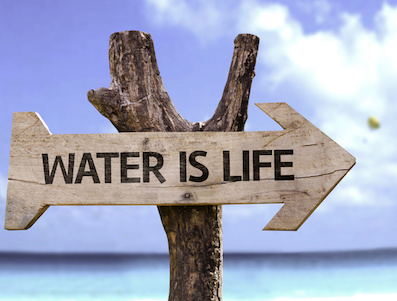 Cleanzine: your weekly cleaning and hygiene industry newsletter 3rd July 2025 Issue no. 1169
Cleanzine: your weekly cleaning and hygiene industry newsletter 3rd July 2025 Issue no. 1169
Your industry news - first
The original and best - for over 20 years!
We strongly recommend viewing Cleanzine full size in your web browser. Click our masthead above to visit our website version.
Global water consumption: why is it increasing and what can we do about it?
 Water consumption is increasing all around the world. The impetus for this increase is primarily down to:
Water consumption is increasing all around the world. The impetus for this increase is primarily down to:
* Worldwide population growth
* The 'urbanisation' of countries around the globe: as populations become more urbanised, the demand for water from local utilities increases
* As the quality of life improves in many countries, there is an increase in water consumption
So where is water used the most around the globe?
According to published reports*, the annual water 'footprint' stats for the top 10 water-using countries around the world are:
* China: 1.5 billion people, 362 trillion gallons annually
* United States: 300 million people, 216 trillion gallons
* Brazil: 175 million people, 95 trillion gallons
* Russia: 143 million people, 71 trillion gallons
* Mexico: 100 million people, 53 trillion gallons
* India: 1.1 billion people, 30 trillion gallons
* United Kingdom: 60 million people, 20 trillion gallons
* France: 60 million people, 20 trillion gallons
* Canada: 33 million people, 19 trillion gallons
* Australia: 20 million people, 12 trillion gallons
"These water footprint statistics, which indicate water consumption in each country, is the total amount of fresh water used in these countries for home consumption, industrial use, agriculture, livestock, irrigation, etc.," says Klaus Reichardt, CEO and founder of Waterless Co., which manufactures no-water urinals.
"We must not forget that the delivery, collection, storage, and treatment of water also means more energy (electricity) is necessary in these countries."
According to Klaus, as water demand increases so does the need for power, "and because burning coal is the primary way electricity is generated around the globe, this means more greenhouse gas emissions into the atmosphere".
He adds that there is only one way to address the worldwide growing thirst for water and its impact on power needs and greenhouse gasses. "We must reduce water consumption and use water much more efficiently," he concludes.
*Source: National Water Footprint Accounts, UNESCO-IHE 2011; these figures can vary and in some cases are estimates.
800.244.6364
[email protected]
www.waterless.com
13th October 2016







